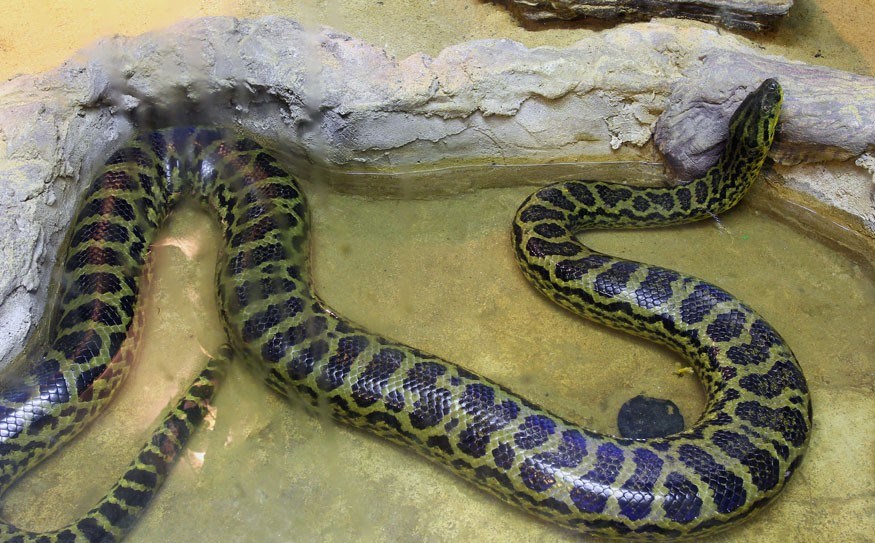When summer hits in the Great White North, people's hopes ascend in step with the sun's climb to its zenith, their expectations to make the most of these few estival months rising into the stratosphere. This daylight-savings sensibility explains why folks search so diligently for the ultimate patio or dock on which to nurse an exquisite drink and watch a late, leisurely sunset; why they cram farmers' markets in hopes of nabbing the perfect purple potato, an ironic flat of heirloom tomatoes priced like a Vancouver condo, or the last glistening pint of local dirtberries. As a cherished cultural sport, treasure hunting reaches its apogee in summer—and no one is immune. But while the rest of you hunt giddily for an uncrowded beach, a weekend camping plan that won't be stymied by traffic and shorts that actually make sense, I'll be busy looking for something else. Something most of you would just as soon vanquish, since my summer dream is most people's nightmare. That's because I spend my summers looking for snakes.
Not full time, of course, but enough that if someone asks what I've been up to it usually makes the list. Given the prevailing epidemic of ophidiophobia, I won't try to sell you on snakes (cool, preternaturally beautiful and otherworldly as they are — oddly successful, too, with an estimated 3,400 species), but hear me out on why this activity is the ultimate in treasure hunting.
Though you may occasionally come across a snake (or vice versa), being able to turn one up on demand is an arcane skill acquired only after years spent trying to find something that is, perhaps more than most creatures, supremely adapted to not being found. Because of this, you can learn a lot from snakes about how the natural world works; I have, and this dialogue of bio-information continues to be one of the biggest draws of chasing them.
To start, snakes spend a lot of time getting in and out of places that you cannot. They're not shape shifters as much as shape defiers, occupying crevices, holes and all manner of interstitial space where you wouldn't think to look for them — which, of course, is the biological point of such behaviour. Some of this has to do with feeding, some with hibernation or sheltering from predation, and some with thermoregulation (being cold-blooded, snakes are attracted to areas of heat inertia in which to power up before conducting other business). Once you get a handle on a particular snake's ecology and the environmental components that fulfill it, you develop a search image — "treasure map" if you will — for that species. This allows you to pick out the most likely landscapes in which to find it, and, within a landscape, the most likely microhabitats —further refined by elements like cover, vegetation, hydrology, weather, time of year, time of day etc. The more animals you find under certain conditions, the more refined your search image becomes.
Still, upping your probability of encounter by knowing where, when and how to look is no guarantee you'll actually find anything. That's because snakes are masters of camouflage whose multifarious patterns have evolved to fluster visual-recognition software in the brains of predators. I was once tracking a transmitter-implanted Burmese python in the Florida Everglades with a park ranger when his receiver suddenly started beeping like crazy; the snake was within a couple metres. Because the water was only about five centimetres deep, it was basically sitting out in the open in a sea of grass. Although we stood literally on top of it, neither of us could actually see the five-metre, 90-kilo animal in the chiaroscuro of vegetation — and it wasn't about to make a movement that might catch our eye, a trick known as "tonic immobility." The lesson wasn't a new one but added dramatic reinforcement: looking for snakes — even big ones — in some environments was like searching a haystack for a hay-coloured needle. As a naturalist friend once pointed out, for every rattlesnake you see there are nine you just walked past and didn't.
This brings me to the object of much of my current attention: the sharp-tailed snake. Although I've developed foolproof search images for Pemberton's secretive rubber boa and near-plague of gartersnakes, the beyond-secretive sharp-tail that I first discovered in the valley in 2011 continues to flummox efforts for reliable discovery. The pencil-sized, eraser-coloured sharp-tail is nocturnal, and a burrowing denizen of deep rockslides whose very crypsis conceals the facts of its feeding and breeding ecology. These habits make looking for sharp-tails more akin to divining hay-coloured needles from a stadium-sized haystack, 99/100ths of which is underground, where a needle might be found in the remaining 1/100th only about .05 per cent of the time that conditions are ideal — an understandably rare crucible. In 300 hours of searching this season it has taken all of my experience and everything I know to turn up exactly one sharp-tailed snake.
I did, however, learn quite a bit from that encounter. Enough, I hope, to hunt down another of these treasures in under 200 hours, granting me some much-deserved patio time.




